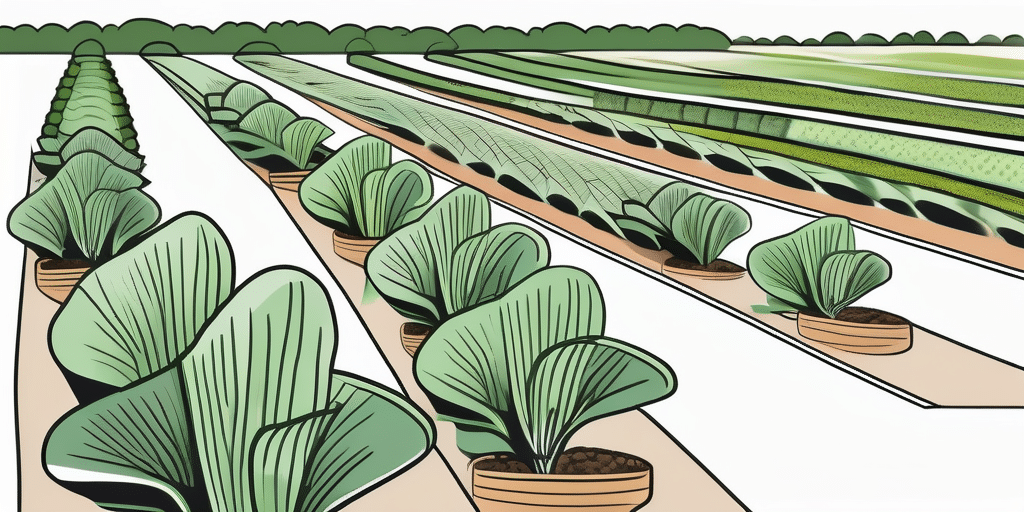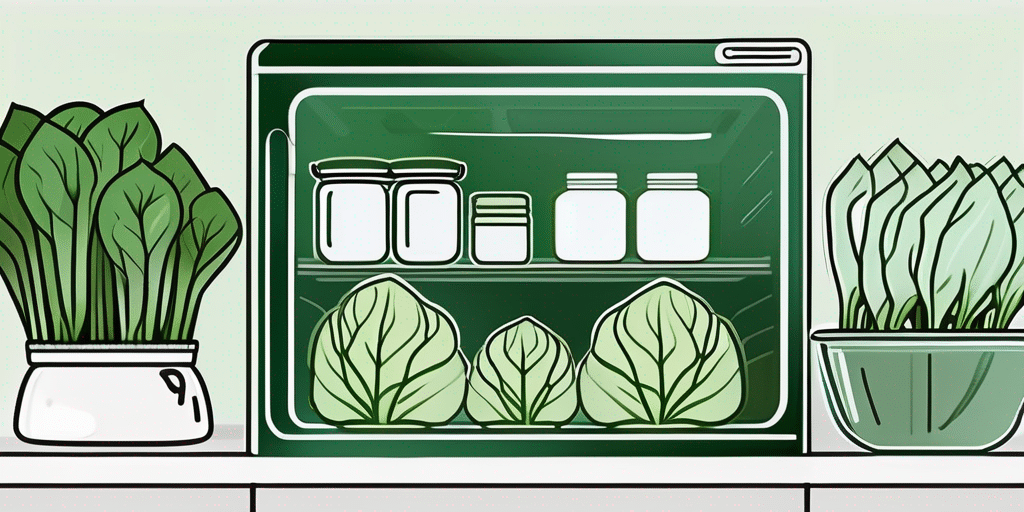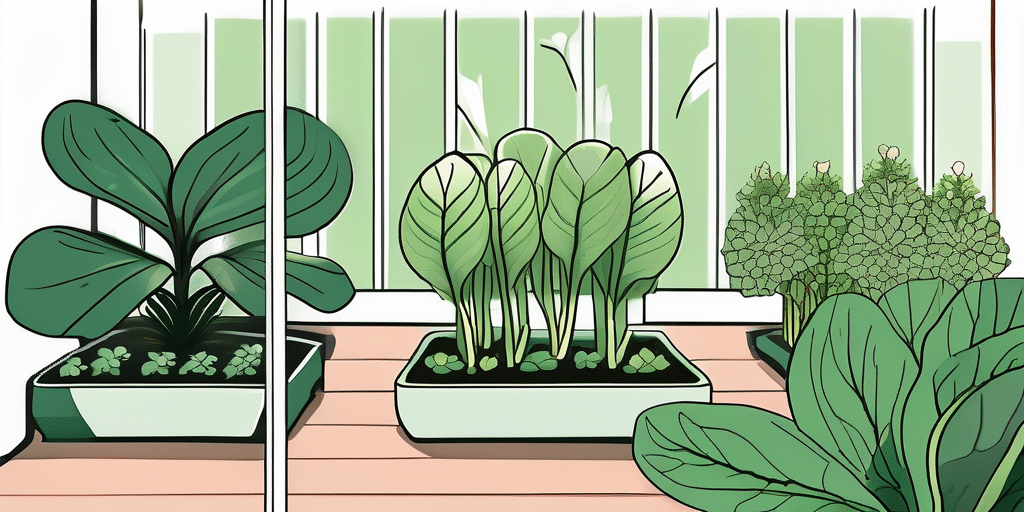Bok choy, also known as Chinese cabbage, is a nutritious and versatile leafy vegetable that can be easily grown in Zones 7a and 7b. Whether you’re an experienced gardener or a beginner, growing bok choy is a rewarding experience that can add a fresh and healthy touch to your meals. In this article, we will discuss the best bok choy varieties for these zones, how to grow bok choy, when to plant it, and when to harvest or pick it. We’ll also answer some frequently asked questions to help you along the way.
Best Bok Choy Varieties for Zones 7a and 7b
When it comes to choosing the best bok choy variety for your garden in Zones 7a and 7b, there are a few options that thrive well in these growing conditions:
- Mei Qing Choi: This compact variety has dark green leaves and is known for its bolt resistance.
- Pacific Choy: With its crisp texture and mild flavor, Pacific Choy is a popular choice for home gardeners.
- Win-Win Choi: This hybrid variety is heat tolerant and easy to grow, making it a reliable choice for Zones 7a and 7b.
Mei Qing Choi, also known as “Mei Qing Pak Choy,” is a Chinese cabbage variety that is perfect for cooler climates like Zones 7a and 7b. Its dark green leaves are not only visually appealing but also packed with nutrients like vitamin A and C. This variety is a favorite among gardeners for its ability to resist bolting, ensuring a longer harvest period.
In addition to its culinary attributes, Pacific Choy is also a great source of antioxidants and fiber, making it a nutritious addition to your diet. Its mild flavor and crunchy texture make it versatile in various dishes, from stir-fries to salads. This variety thrives in the moderate temperatures of Zones 7a and 7b, providing a bountiful harvest for home gardeners throughout the growing season.
Growing Bok Choy in Zones 7a and 7b
Now that you’ve selected the perfect bok choy variety for your garden, it’s time to learn how to grow it successfully. Here are some essential tips to get you started:
- Prepare the soil: Bok choy prefers well-draining soil rich in organic matter. Amend the soil with compost or well-rotted manure before planting to ensure optimal growth.
- Sow the seeds: Bok choy can be grown directly from seeds or started indoors and transplanted later. Sow the seeds about half an inch deep and space them 6 to 8 inches apart.
- Provide adequate sunlight: Bok choy thrives in full sun but can tolerate partial shade. Ensure that your plants receive at least 6 hours of sunlight per day.
- Watering requirements: Bok choy needs consistently moist soil, especially during the germination and growth stages. Aim to keep the soil evenly moist, but avoid overwatering to prevent root rot.
- Protect from extreme temperatures: Bok choy prefers cooler temperatures and can bolt or become bitter in hot weather. Consider providing shade during the hottest parts of the day or planting in a location with afternoon shade.
- Control pests and diseases: Keep an eye out for common pests such as aphids and cabbage worms. Monitor your plants regularly and take appropriate action, such as using organic insecticides or practicing companion planting.
- Harvesting: Bok choy is typically ready for harvest within 45 to 60 days after planting. Harvest the outer leaves by cutting them at the base with a sharp knife or scissors, allowing the center leaves to continue growing.
Now, let’s delve deeper into some of the key aspects of growing bok choy in Zones 7a and 7b. These zones, which cover a large part of the United States, present unique challenges and opportunities for bok choy cultivation.
One important consideration for bok choy growers in Zones 7a and 7b is the length of the growing season. With an average frost-free period of around 200 days, gardeners in these zones have a relatively long window of opportunity to grow bok choy. This extended season allows for multiple plantings and successive harvests, maximizing the yield of this nutritious leafy green.
In addition to the length of the growing season, temperature fluctuations can also impact bok choy in these zones. While bok choy prefers cooler temperatures, it is important to monitor the weather closely, as sudden heatwaves can cause the plants to bolt and turn bitter. By providing shade during the hottest parts of the day or planting in a location with afternoon shade, you can help protect your bok choy from these temperature extremes.
Furthermore, the rich and diverse soil types found in Zones 7a and 7b offer an excellent opportunity to enhance the growth of bok choy. By conducting a soil test, you can determine the specific nutrient needs of your soil and make targeted amendments to ensure optimal growth. Whether it’s adding compost to improve soil structure or incorporating well-rotted manure to boost organic matter, taking the time to prepare the soil will pay off in the form of healthy and productive bok choy plants.
By following these tips and considering the unique characteristics of Zones 7a and 7b, you’ll be well on your way to growing bok choy successfully. So roll up your sleeves, get your hands dirty, and enjoy the satisfaction of harvesting your own fresh and delicious bok choy straight from your garden!
Climate & Hardiness in Zones 7a and 7b
Zones 7a and 7b are characterized by mild winters and hot, humid summers. Bok choy is a cool-season vegetable that thrives in these conditions. It can tolerate light frosts but may need protection in colder temperatures. By planting bok choy in the appropriate season and providing the necessary care, you can enjoy a bountiful harvest.
When to Plant Bok Choy in Zones 7a and 7b
The ideal time to plant bok choy in Zones 7a and 7b is during the spring and fall seasons. Start seeds indoors 4 to 6 weeks before the last expected frost date, or directly sow seeds outdoors once the soil temperature reaches around 40°F (4°C) in early spring or late summer. This staggered planting allows you to have a continuous harvest throughout the growing season.
When to Harvest or Pick Bok Choy in Zones 7a and 7b
Bok choy is ready for harvest when the leaves are at the desired size and texture. Typically, this occurs around 45 to 60 days after planting, depending on the variety and growing conditions. Harvest the outer leaves by cutting them at the base with a sharp knife or scissors, leaving the center leaves to continue growing. Remember to harvest bok choy in the morning when the leaves are crisp and the plant is at its freshest.
Frequently Asked Questions
Q: Can bok choy be grown in containers?
A: Yes, bok choy can be successfully grown in containers. Choose a container that is at least 8 inches deep and has drainage holes. Fill it with well-draining potting soil and follow the same growing instructions as for in-ground cultivation.
Q: How often should I fertilize my bok choy plants?
A: Bok choy benefits from regular feeding with a balanced organic fertilizer. Apply it according to the package instructions, usually every 4 to 6 weeks, to ensure healthy growth and optimal nutrient uptake.
Q: What are some common bok choy pests and how can I control them?
A: Common pests that may affect bok choy include aphids, cabbage worms, and flea beetles. To control them, you can try companion planting with insect-repellent herbs such as basil or rosemary. Additionally, you can use organic insecticides such as neem oil or insecticidal soap, following the product instructions carefully.
Q: Can I save bok choy seeds for future planting?
A: Yes, bok choy is a biennial plant, so it will produce seeds in its second year. Allow a few mature plants to bolt and produce flowers. Once the flowers fade, harvest the seed pods, dry them thoroughly, and store them in a cool, dry place for future use.
By following these tips and guidelines, you’ll be well on your way to growing vibrant and delicious bok choy in Zones 7a and 7b. Whether you’re adding it to stir-fries, soups, or salads, the fresh taste and nutritional benefits of homegrown bok choy are sure to elevate your cooking. So, roll up your sleeves, get your gardening tools ready, and enjoy the process of growing your own bok choy!
Join Our Gardening Community
Ready to take your bok choy cultivation to the next level? Subscribe for free to How to Grow Everything and learn how to build the garden of your dreams! Receive personalized gardening advice tailored to your specific zone, experience, and interests. Enjoy the best gardening tips, special offers, and insights delivered directly to your inbox—no spam, just valuable information from our family to yours. With thousands of free articles at your fingertips, your green thumb will thank you!






